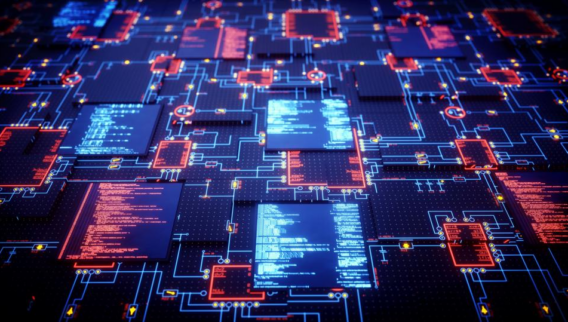A stakeholder analysis is a project management tool used to identify the project’s stakeholders, issues they care about and how they will be impacted by the project. Creating a stakeholder analysis will outline the essential people you need to communicate with about the progress and scope of the project, the topics you need to keep them informed about as the project progresses and how often you should speak to each stakeholder. In this article, we cover what is a stakeholder analysis, how to conduct one and why it’s important.
What Is a Stakeholder Analysis?
The stakeholder analysis is conducted at the beginning of a project to better understand the need of each stakeholder and their primary requirements. A stakeholder includes any person or group the project will impact, including investors, advisors, sponsors, team members and current or future customers.
Purpose of a Stakeholder Analysis
The purpose of a stakeholder analysis is to outline the key stakeholders and their needs at the start of the project. It is important to have a clear understanding of each stakeholder and what they expect, especially because stakeholders’ needs and expectations may collide with each other or with the project’s core requirements.
How To Do a Stakeholder Analysis?
Conducting a stakeholder analysis starts with gathering enough information to understand each stakeholder’s needs, according to Chris Mattmann, Chief Technology and Innovation Officer (CTIO) at NASA Jet Propulsion Laboratory. Typically, the designers on the team would interview each of the stakeholders to understand their processes, needs, limitations and interests.
To illustrate this, Mattmann outlined a hypothetical project to measure and create a map of the water in the western United States. This would involve many different systems and teams, such as people to conduct field experiments, and equipment like airplanes, towers and satellites. To conduct the stakeholder analysis, the design team would interview each stakeholder, whether that be the sponsors, the data providers, the IT team or the project developers.
After collecting this raw data from interviews, the team would review the information from these discussions and start interpreting it. This is when the team might lay out a lot of sticky notes on the wall and start grouping them by requirement or, alternatively, use a software tool to outline the raw data. Essentially, the idea is to identify trends and possible points of conflict between the information each stakeholder shared in the interview.
“Part of stakeholder analysis is to do the interviews, design work, brainstorming, and then to map the results of that against your core requirements defined by the sponsors of the project and see if we can build them,” Mattmann explained. Once you compare the different feedback from stakeholders, you may find it doesn’t match up to the core requirements of the project. This might mean readjusting the project scope or reevaluating the direction of the project, but a stakeholder analysis will allow you to figure this out before the project begins.
How To Conduct a Stakeholder Map
A stakeholder map will allow you to visually interpret how often you need to stay in contact with each stakeholder, how closely you should manage them and how to keep them satisfied and/or informed. To create a stakeholder map, you would define a few important dimensions, then build quadrants for the dimensions you want to optimize and group the stakeholder in that map, Mattmann explained.
For example, you might choose to categorize the stakeholders by importance and influence. A chart might look something like this:

Once you determine where each stakeholder falls on the table, you’ll be able to determine how you communicate with each stakeholder.
“You want your most important stakeholders to be the most interested in your project,” Mattmann explained. That may mean keeping daily communication with them. “You don’t ever want to let their interest wane because they’re the most important people,” he said.
On the other hand, it may not be as high of a priority to communicate regularly with the stakeholders who have less influence or are going to be less impacted by the project. For these stakeholders, “you might not care if their interest in the project is low because they’re not the most important stakeholders and they’re not going to add a ton of value based on their influence,” Mattmann added.
For example, in the initial example of the map to measure the water levels in the western U.S., a stakeholder analysis might outline how to communicate with the project’s data providers. “What we should do is keep them informed, but we don’t have to have day-to-day contact with them,” Mattmann explained. “That way, we’re managing our stakeholders not because they’re the most influential—they’re not the ones that are giving us the most money—but they do have a lot of interest in getting their data out there,” he added.
Frequently Asked Questions
What are the advantages of a stakeholder analysis?
The stakeholder analysis will tell you what each stakeholder needs and expects from the project, as well as the important people you need to communicate with, the topics you need to keep them informed about as the project progresses and how often you should speak to each stakeholder.
What is the main purpose of a stakeholder analysis?
The purpose of a stakeholder analysis is to outline the key stakeholders and their needs for the project. It is important to have a clear understanding of each stakeholder and what they are expecting from the project from the start.
What is an example of a stakeholder?
A stakeholder includes any person or group who will be impacted by the project. This could include investors, advisors, sponsors, team members and current or future customers.
When is the best time to perform a stakeholder analysis?
An ideal time to conduct a stakeholder analysis is during the early phase of your project as this will give you a better understanding of where things stand with your project currently and where you need to improve in the present and the future. This analysis should be conducted on a regular interval, such as when your project enters a new phase, as it will show how your stakeholders are evolving as the project progresses and where improvements can still be made. It allows you to update your stakeholder strategies as needed.














